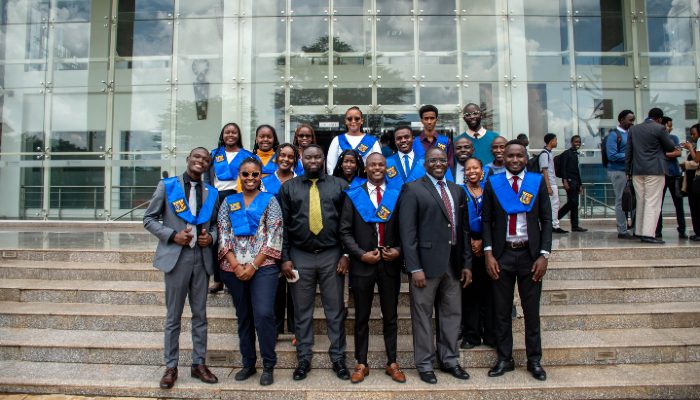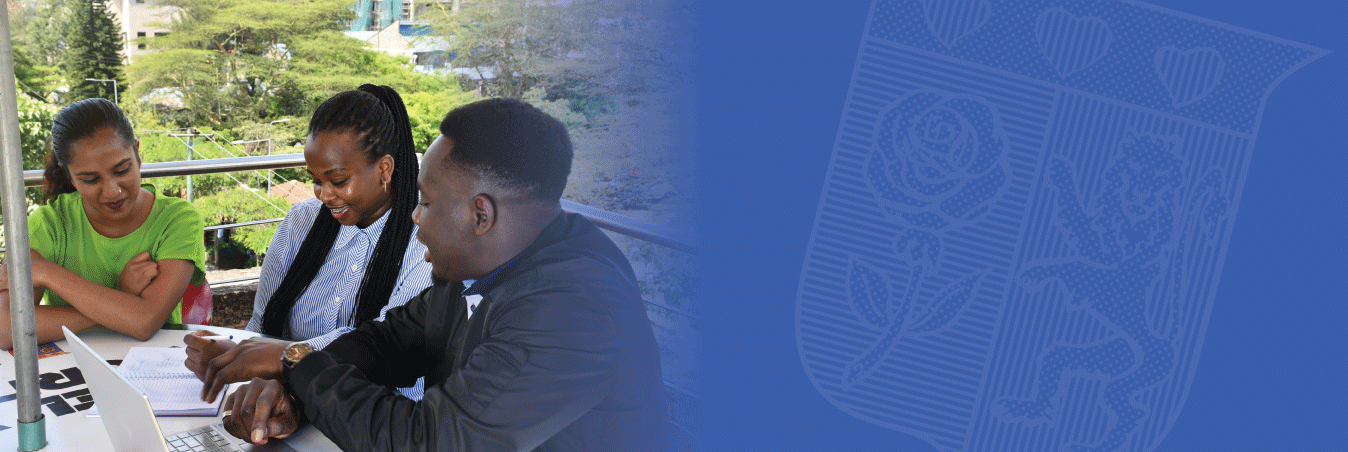While your physical health is undoubtedly crucial, your overall well-being is influenced by a myriad of factors. Among these, intellectual wellness stands tall, shaping your perceptions and interactions with the world.
Did you know that learning sign language is part of this dimension?
At the 2023 Strathmore University Wellness Fair, the Auditorium buzzed with a hive of activities. Amidst the talks and presentations, one figure stood out—Jane Mbaya. Positioned beside the podium, she initially seemed out of place. However, as the session progressed, it became apparent that she was interpreting for a hearing-impaired gentleman in the audience. Now, sign language is not entirely foreign to me. My twin sister works as a professional sign language interpreter at our home church, and I’ve picked up a few signs from her. But there’s something about witnessing it in action that sparks curiosity and wonder. Last week, I ran into Jane and the same gentleman on campus, engaged in conversation using sign language. Curiosity got the better of me, and I couldn’t help but wonder what they were discussing.
A Hands-on adventure—What made Jane want to be a sign language interpreter? Why does she love what she does? What is her journey?
 Jane’s journey to becoming a sign language interpreter came about when she had just completed her secondary school education. Within the sacred walls of her church – Christ the King Church in Kibera, she would often see the deaf community huddled up in a corner, silently waiting for volunteer interpreters from a neighboring parish to come and interpret the sermon. Curious about their silent communication, Jane found herself contemplating their experiences: What conversations take place within the graceful movements of their hands?
Jane’s journey to becoming a sign language interpreter came about when she had just completed her secondary school education. Within the sacred walls of her church – Christ the King Church in Kibera, she would often see the deaf community huddled up in a corner, silently waiting for volunteer interpreters from a neighboring parish to come and interpret the sermon. Curious about their silent communication, Jane found herself contemplating their experiences: What conversations take place within the graceful movements of their hands?
Driven by an insatiable desire to understand, she took her first steps towards learning the language, by enrolling in a class offered by the church. As she progressed, she found herself “hand in hand” with the deaf community, growing her skills and connections.
In 2018, her horizons broadened beyond the church as she became involved in Strathmore University’s Macheo Program. Macheo is an initiative under the Community Outreach Program aimed at uplifting children living in Kibera slums by offering academic support, mentorship, and guidance to empower students.
During the program’s community service visits, the journey often led to the gates of the Kitui School For The Disabled (For the Deaf And Blind). Here, amidst the anticipation of the children at the sight of the old Strathmore bus and the arrival of visitors, the stark reality of the communication barrier stood between the two worlds – an unspoken disconnect. How could their world be truly understood? #BecauseWeCare, how do we create an impact with these children who are deaf?
Jane saw this as an opportunity to sign a brighter future for them. Armed with her skills and experience, she became a beacon of hope. With each subsequent visit, the urgency to connect with them grew stronger.
Inspiring Inclusion – What motivates her?
While there’s a huge gap in communication, it is crucial to consider how to accommodate these special people and ensure their comfort as they navigate the world we live in. They are not just “watu wa kusaidiwa”, they are ordinary but valuable members of society. Learning sign language is just as important and akin to mastering French or any other foreign language and equally requires a great deal of patience and empathy. The unique structure of sign language, contrasting with the traditional English learning approach, offers a fascinating glimpse into the rich diversity.
“In English, sentences typically follow the order of subject, verb, then object, for example,”Keni is playing football.” However, in sign language, the order is different to keep it concise for better comprehension: it’s object, subject, verb – “football Keni play.”
The Challenge of Being an Interpreter
Sign language is incredibly diverse in the different professional fields and industries, each with its own unique methods of communication tailored for the deaf. However, Jane’s proficiency in sign language has primarily been confined to church settings and interactions with students or children. If she were to navigate the medical field, she would encounter challenges due to unfamiliar medical terminology or even how to spell them. Additionally, in the church setting, she faces a hurdle with pastors or preachers who deliver sermons at lightning speed that unfortunately, makes it difficult to interpret all crucial details. Nevertheless, once the service wraps up, Jane dutifully engages in discussions with those with a hearing impairment, elaborating on any information that may have been inadvertently omitted during interpretation.
“Sometimes, we are caught unaware of the context of the environment we are in to help with interpretation, but we offer our best efforts to grasp the content and contextualize it for everyone,” Jane says.
Sign up!
“It is a ministry for me … and service to society is integral in my day to day life. It’s about inclusivity!” Jane explains, her smile a radiant beacon of compassion. “No one should be left behind, no matter their circumstances or abilities. We’re all children of God, deserving of love and understanding.”
Enroll in a sign language class. Even if it’s starting with just the basics, every step counts towards bridging the communication gap. When you encounter members of the deaf community, extend a warm gesture and engage with them. Making them feel less lonely is key to fostering inclusion.
Beyond signing…
Jane graces the Mentoring Office as an Administrative Assistant, her dedication to empowering youth shining through every action, every word. But to truly understand the depths of her impact, we must venture back to a time before titles and offices.
To recharge and find inner peace, Jane turns to nature. “Connecting with the natural world helps me stay grounded and focused on what truly matters,” she reveals. Also nature to her mirrors life itself—challenges and victories, of seasons and cycles, where after every storm, there lies calm, and after every night, dawn.
As we celebrate Women’s Month, Jane Mbaya stands as an example of exemplary womanhood at its finest—strong, compassionate, and relentlessly hopeful. She is a testament to the transformative power of belief—belief in oneself, belief in others, and belief in a brighter tomorrow. It is also a reminder that even in the face of adversity, we have the capacity to rise, to shine, and to make a difference in the lives of those around us. For in the end, it is not the challenges we face that define us, but the courage with which we rise above them.
Article written by: Jemmy M. Kamau and Keith Albert
What’s your story? We’d like to hear it. Contact us via communications@strathmore.edu
ALSO CHECK OUT
See more news-

Gen Francis Ogolla: How power of humility delivers transformative leadership* 25,Apr,2024
As the country mourns the Chief of Defence Forces of Kenya, General
-

Highlights from the SBS Undergraduate Fourth Years’ Gala Dinner* 25,Apr,2024
Friday, 8th March 2024 was an evening of celebration as students from the
-

Celebrating Humanities and Social Sciences 2024 graduates.* 25,Apr,2024
On Friday evening, April 19th 2024, Strathmore University held a celebratory gala
-

Elevating Tourism & Hospitality Leadership: Transformative trends shaping the future of the industry* 23,Apr,2024
On April 18, 2024, the Strathmore University School of Tourism and Hospitality
-

Towards Climate Resilience: Strathmore University, Imperial College Partnership* 23,Apr,2024
In a bid to foster joint efforts in tackling climate resilience issues,
-

Crossing Continents: Yvette Yego’s Transformative Journey through the Sciences Po Exchange Program* 22,Apr,2024
“I’ve gained extensive knowledge in international studies, interacted with diverse students from
-

Stratizens Explore Malaysian Cinema: Mechamato Screening at Sarit Center* 22,Apr,2024
Imagine being invited by the Malaysian embassy in Kenya to an exclusive
-

Strathmore Hosts the 2nd Mediation Summit on Employment Disputes* 19,Apr,2024
In a world where the dynamics of employment relations shape the very
-

Strathmore Tax Hackathon 2024: Cultivating Innovation in Tax Policy* 19,Apr,2024
In the heart of Nairobi, the prestigious Strathmore Law School hosted the
-

Transforming Mental Health Support for Students at Strathmore* 17,Apr,2024
In Kenya, within the bustling academic environment of universities, there exists a

